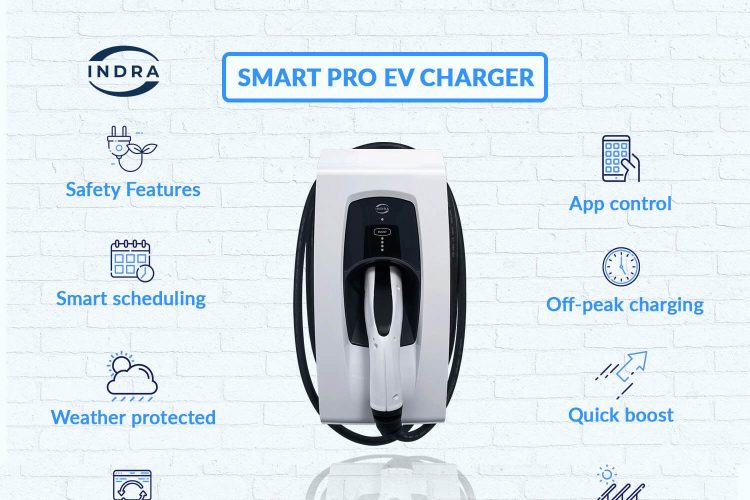Most electric vehicle drivers have made the transition at least partially for environmental reasons. However, one may be deterred by the fact that EVs are often charged using energy from non-renewable sources and the energy requirement for your car can be very expensive.
A great answer to this dilemma is to draw energy from solar panels to power your home charger. You can charge your EV, including Tesla, with solar panels. This guarantees that your energy usage is from a renewable source and can save a significant amount of money moving forward.
EV Battery Capacity
EVs have a variety of charging capacities which will, inevitably, impact the power requirements. EV battery capacity is measured in kilowatt-hours (kWh) and can range from around 20 up to 100 kWh and beyond.
For example, the most recent Tesla models have 100 kWh batteries but the BMW i3 only 33 kWh.
How many solar panels does it take to charge an electric car?
Given the variety of battery capacities, the number of solar panels needed to charge your EV will vary depending on the vehicle.
Let’s take the i3 to start off with as an example of the standard EV currently on the market. The typical solar panel is 250 watts and will generate 30 to 40 kWh per month. Taking the minimum estimate, this is 1 kWh per day, meaning that you would need 33 solar panels to fully charge your EV every day.
Fear not, the average UK driver travels around 40 miles per day, around 12 kWh of electricity. This means you would only need 12 solar panels. Moreover, this is a very conservative example and could be even less if you drive less frequently or your solar panels are higher efficient.
In the case of Tesla, charging from 0 to 100% every day on a 100 kWh EV battery would require 100 solar panels. However, the same average distance applies, and so Tesla vehicles would require the exact same number of solar panels as other EVs, around 12.
Given that most solar panel systems have around 25 panels and this can easily fit on the average UK family home’s roof, it is very realistic to charge your EV using solar power and still have some left over.
A consideration for UK weather
We are all aware that UK weather leaves a lot to be desired. As such, we must consider the impact this has on our charging capabilities. The best advice would be to maintain the main grid connection to allow this to kick in whenever your solar panels fall short.
This will be most prevalent in the winter months, so expect to have to purchase electricity from the main grid more often. However, the reciprocal also applies in that you may be able to receive money back from the grid if you end up in a net generation position in the summer.
How much could you save?
The average UK driver travels around 10,000 miles each year. At 15p per mile fuel cost for petrol vehicles, compared to zero solar car charge cost, this could lead to a saving of £1,500 10,000 x 15p) each year.
This is just the saving for your electric vehicle, it could be significantly more if you power your whole home using solar energy. Annual savings on general energy requirements from solar panels can be up to £2,500 per household each year. That could be a total saving of £4,000!
A step-by-step guide to solar charging
- Calculate your average daily energy consumption without your EV. This can be done using your in-home electricity meter.
- Calculate your average daily mileage and divide by 4, equalling kW used driving per day. Your car’s mileage should be displayed clearly on the dashboard so just use this to measure the distance traveled. We recommend looking at a whole week and then taking the average per day.
- Add this energy requirement to your daily consumption and this should tell you how much you will use in total when you add in an EV.
- Multiply the figure in step 3 by 365 days of the year and divide by 1,000 to give the suggested kWh size needed. This will give you the amount needed to offset your electric vehicle and domestic electricity requirement.
(To calculate only the requirements for the EV, simply miss out on step 1)
Future-proofing our homes
A big part of the UK government’s net zero ambition is future-proofing our homes, both new builds and existing properties. We work closely with many housebuilders to make sure that their homes are equipped for home charging and renewable energy generation. That said, you can also help to add value to your home by installing solar panels and home charging units.
If you are installing solar panels then it is best to consider your EV charging needs, even if you plan on buying an electric car two or three years down the road.
If you are an EV owner or prospective owner and would like to know more about connecting your home charger to solar power, please get in touch. A member of our technical team would be happy to answer any questions that you have.






